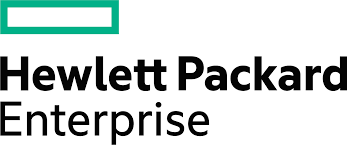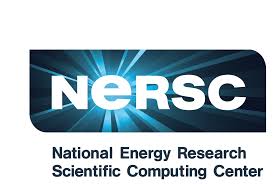About Us
Who We Are
OpenCHAMI is an open-source, composable toolkit for high-performance computing (HPC) and AI infrastructure management. We’ve recently joined both the Linux Foundation and the High Performance Software Foundation (HPSF) to deepen our commitment to open-source collaboration in the HPC/AI community.
See the announcement at hpsf.io!
Founding Partners
OpenCHAMI’s Journey and Evolution
Founded in 2023 by a consortium of HPC centers and research institutions(LANL, NERSC, CSCS, HPE, and the University of Bristol), OpenCHAMI began as an innovative response to the rigid, monolithic HPC management solutions of the past. Early efforts repurposed proven components from Cray System Manager (CSM) to address the evolving needs of modern HPC environments. Over time, OpenCHAMI evolved into a suite of modular microservices designed for automated hardware discovery, secure bootstrapping, and API-driven infrastructure management.
This journey of decentralized innovation, built on trust and open collaboration, has united a global community of practitioners—making OpenCHAMI a natural fit for HPC Infrastructure Management.
Joining the Linux Foundation
Empowering Decentralized Innovation in HPC/AI Infrastructure Management OpenCHAMI, the open-source, composable toolkit for HPC and AI infrastructure management, is excited to announce its formal integration into the Linux Foundation—a neutral, trusted hub where developers and organizations collaborate to code, manage, and scale transformative open technology projects.
This significant milestone reinforces OpenCHAMI’s dedication to developing secure, scalable, and composable solutions for provisioning and managing HPC and AI infrastructures across diverse environments. Together, OpenCHAMI and the Linux Foundation will drive the future of HPC/AI infrastructure management by combining community-driven innovation with the power of a neutral, globally recognized open-source home.
By joining the Linux Foundation, we gain a neutral, trusted hub where developers and organizations collaborate to code, manage, and scale transformative open technology projects. At the same time, our HPSF membership strengthens our alignment with a global community of HPC professionals focused on fostering innovation in HPC and AI.
Joining the HPSF
As HPC and AI systems continue to expand in capability and complexity, their administration demands robust, flexible, and community-driven tooling. By joining with HPSF, OpenCHAMI signals its alignment with the foundation’s mission to “fuel innovation in high performance computing through open-source collaboration.” As a part of HPSF, the project is able to better share the mission of openness within the HPC community and benefit from the wisdome and contributions of the other projects. This is an opportunity to empower broader community engagement, shared best practices, and a united effort to support the long-term evolution of HPC/AI infrastructure management.
Frequently Asked Questions
1. What is OpenCHAMI?
OpenCHAMI stands for Open Composable Heterogeneous Adaptive Management Infrastructure. It is a consortium-driven, open-source toolkit designed to simplify and streamline the provisioning and management of HPC and AI systems.
2. What challenges does OpenCHAMI address?
Traditional HPC management solutions are often rigid, monolithic, and vendor-specific. OpenCHAMI overcomes these challenges by:
- Automated Hardware Discovery: Utilizing Redfish-based technology.
- Flexible API-Driven Control: For customizable grouping and tenancy delegation.
- Streamlined Provisioning: Infrastructure-as-Code practices reduce manual errors.
- Secure Node Bootstrapping: Automated initialization with robust security measures.
- Customizable Deployments: Supporting diskful or diskless boots, hypervisors, etc.
3. How does OpenCHAMI align with the Linux Foundation’s mission?
OpenCHAMI embodies the Linux Foundation’s vision of decentralized innovation and open collaboration, offering a neutral home for code and encouraging community-driven contributions.
4. How does OpenCHAMI help system administrators, operators, and researchers?
- System Administrators: Automated hardware discovery, secure bootstrapping, and robust API-driven management.
- Operators: Composable architecture for heterogeneous environments and streamlined updates.
- Researchers: Flexible configurations tailored to unique project needs.
5. Describe the users and deployments of OpenCHAMI.
OpenCHAMI is trusted by HPC centers, national labs, and research institutions worldwide, from small AI clusters to large-scale supercomputers.
6. What are the partner ambitions for the project?
- Fostering a Global HPC Community
- Driving Cloud-Native Innovation
- Ensuring Vendor Neutrality
- Supporting Next-Generation Workloads
8. What benefits arise from collaborating with OpenCHAMI under the Linux Foundation?
- Shared Innovation
- Collective Problem-Solving
- Accelerated Adoption
- Long-Term Sustainability
9. How is OpenCHAMI governed?
- Technical Steering Committee (TSC): Oversees technical direction.
- Governing Board: Key partner institutions provide strategic oversight.
- Consensus-Based Decision Making: Collaborative RFD (Request for Discussion) process.
10. Where can I learn more about OpenCHAMI?
Website: openchami.org GitHub: OpenCHAMI Organization Community Channels: Forums, mailing lists, and social media.
All trademarks are the property of their respective owners.




